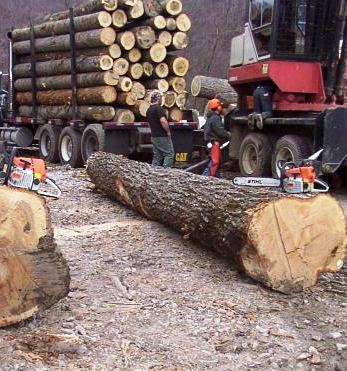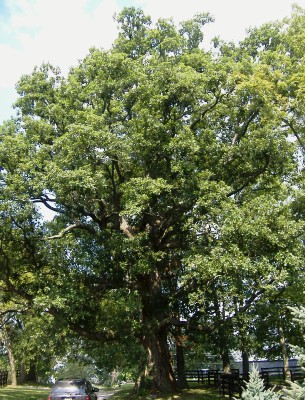All Kentuckians benefit from our trees and forests. Whether a dense stand of hardwoods in the east, a riparian forest along rivers in the west or a stately bur oak in the Bluegrass, every Kentuckian will breathe the clean air, drink the clean water, enjoy the wildlife and use the products derived from our forests. Although the Division of Forestry serves landowners, communities and all Kentuckians by maintaining the health and productivity of our state's forests, it is important that all citizens be aware of the importance of this resource in order to ensure sustainability. The following facts about Kentucky's forests are a testament to their ecologic, economic and social importance.
General Facts

- Kentucky has one of the most diverse hardwood species mix in the nation (second only to Florida).
- Forty-eight percent of Kentucky is forestland - that's 12.4 million acres of forests.
- Eighty-eight percent of Kentucky's forestland is owned by private landowners.
- Seventy-five percent of the forestland is composed of oak-hickory forest type.
- Red maple is the most common individual tree species accounting for 12.2 percent of all trees in Kentucky.
Wildland Fire

- Forest fires are a major threat to Kentucky's forests.
- The average number of wildland fires in Kentucky each year is 1,447.
- Arson is the No. 1 cause of wildland fires in Kentucky.
- The second-leading cause of wildland fires is uncontrolled debris burning.
- Ninety-nine percent of all wildfires in Kentucky are caused by humans.
- The worst fire year in Kentucky in the last decade was 2001 with a total of 178,925 acres burned.
- Unlike the western United States, hand crews put out most of the wildland fires in Kentucky.
- Aircraft assistance is used only in extreme situations.
Timber Industry

- In 2016, Kentucky's forest industries accounted for $13.3 billion in economic contribution to the state.
- Kentucky ranks in the top three nationally in hardwood production and ranks No. 1 in the South with sawlog and veneer production.
- The top three species of lumber produced are white oak, yellow poplar and red oak.
- There are more than 3,500 forest industries in the state.
- Forest industries directly and indirectly employ more than 59,000 Kentuckians.
- The Kentucky Forest Conservation Act requires the division to inspect all known commercial timber harvest operations statewide to ensure best management practices are implemented.
Champion Trees

- The tallest champion tree in the state is a yellow-poplar located in McCreary County measuring 159 feet tall.
- The largest recorded champion tree in Kentucky is an American Sycamore in Harrison County. It is 320 inches (more than 26.5 feet) in circumference.
- The county with the most state champions is Jefferson County with 8.
- The smallest champion is a Mountain maple with a circumference of 4 inches and is located at Cascade Caverns State Nature Preserves in Carter County.
- The Kentucky State Tree is the tulip poplar, also called yellow-poplar.
- The State Heritage Tree is the Kentucky coffeetree.
Fall Colors
- Leaves change color as the amount of sunlight wanes and their fall brilliance is determined not only by the genetic characteristics of the parents but by other environmental factors including temperature and soil moisture.
- Brilliant fall colors occur when there is ample moisture, followed by dry, warm days and cool, frostless nights.
- Less vibrant colors occur after an early frost.
- Visit American Forests site on Fall Foliage at https://www.americanforests.org/fall-foliage-map/.
Further information about Kentucky's forest facts can be found at the USDA Forest Inventory & Analysis One-Click Factsheet.